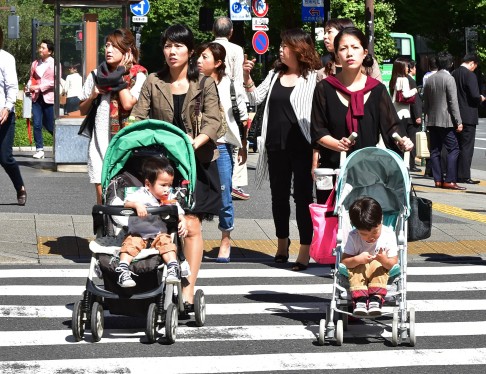
Forget about gendered careers, women's workplace equality is a necessity in Asia's aging population
Doris Magsaysay Ho says population ageing across the region means women's equal participation in the economy can no longer remain an aspirational goal - it has to become an economic imperative
The Asia-Pacific region is getting old. Earlier this year, the Philippines entered its demographic "sweet spot" where the majority of the population is of working age. This trend will last for over 30 years, fuelling growth and attracting investment into the economy. But the Philippines is the last of the region's economies to do so. The rest of the region is getting on. Japan, for example, will see its population fall from 127 million to about 97 million in 2050, close to 40 per cent of which will be aged 65 or over.
The mindset change required is more than simply accepting a greater role for women in the workplace, management and leadership
In 2050, it is anticipated that 25 per cent of China's estimated population will be at retirement age. Indeed, by this point, the Philippines will also be reaching the sunset of its demographic "sweet spot". The bright spark of the Asian economies - the drivers of global growth in the first half of this century - will start to fade.
But ageing population stories often miss one important point. Too many economies fail to make full use of the potential of half their working-age population: women. It is estimated that the Asia-Pacific region loses close to US$90 billion in gross domestic product a year because of policies and social norms that hold back women in the economy.

To bring women into the workforce is no longer a choice but a necessity. Countries such as Japan have large numbers of highly educated and skilled women outside the workforce. Almost 80 per cent of women graduates there seek employment after graduation, and they are just as successful at getting jobs as men. But then they disappear from the workforce. Despite 86 per cent of married Japanese mothers stating they wish to stay in work, around half quit a year after giving birth.
The story differs slightly around the Asia-Pacific. Even in the US, women still make up only around 20 per cent of senior management positions.
READ MORE: Asian governments must find strategies to deal with ageing populations
The picture is not all bad. Some Asia-Pacific economies such as China and the Philippines, Thailand and Vietnam buck global trends, with women occupying very high proportions of senior management and executive positions. If the region as a whole mirrored these trends in economically empowered women, more of the lost US$90 billion would start to appear in the region's GDP figures.
Women's economic empowerment is an important theme as the Philippines hosts the Asia-Pacific Economic Co-Operation forum. Our goal is to remove barriers and understand from leaders in women's economic empowerment how to push aside the obstacles. It is an issue that embraces more than policy. This is where business can outpace government in delivering practical change.

READ MORE: Can Hong Kong rise to the challenge of changes to its population dynamics?
As the region's population ages and the workforce shrinks, women can promote economic progress by entering or re-entering the workforce. The mindset change required is more than simply accepting a greater role for women in the workplace, management and leadership.
Women will also be taking jobs in sectors where they have been historically underrepresented. One of the most critical sectors is transport. Failing to offer women a full role in the transport sector will hamper the region's ability to trade, commute, travel and grow. In recognition of such acute challenges, the Philippines launched last week's Apec Transport Minister's Meeting with the "Women in Transport" initiative.
An ageing and shrinking workforce creates even more impetus to ensure all sectors of the economy are blind to gender. For some countries, the pursuit of economic progress means changing centuries-old cultural norms that define roles or jobs based on gender. The effort must be made.
